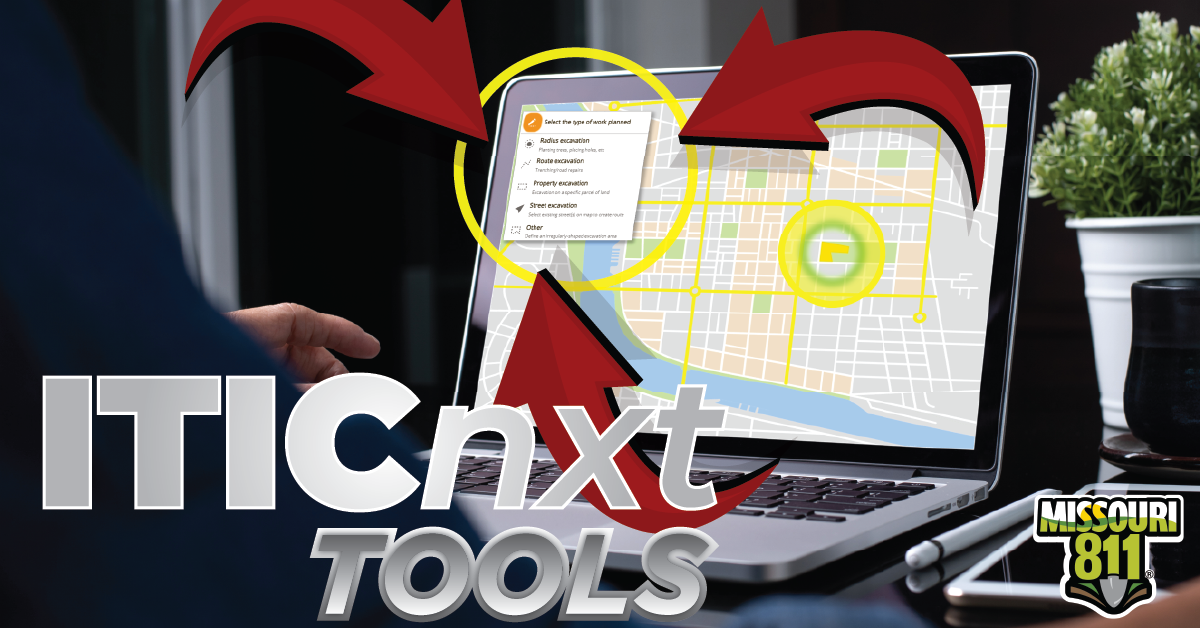When it comes to safe excavation in Missouri, one statistic stands out as both alarming and possibly preventable: The number of damages occurring on the start date of a ticket.
Missouri 811 data reveals that over 2,300 damages each year occur on the start date of a ticket:
|
Year |
Total Damages |
Damages on Start Date |
|
2020 |
12,575 |
2337 |
|
2021 |
13,803 |
2361 |
|
2022 |
14,579 |
2340 |
|
2023 |
14,562 |
2201 |
|
2024 |
14,789 |
2233 |
|
2025 |
11,914 |
1449* |
Note: 2025 data is incomplete.
Despite year-to-year variations in total damages, Start Date damages remain stubbornly consistent, hovering around the same level for four consecutive years. These incidents are concerning for Missouri 811 and its members. While we don’t have all the answers, one thing is for sure, a good portion of these incidents can be avoided if the excavator confirms that all utilities have provided a positive response, and that a thorough jobsite review is completed before starting any excavation.
Why Confirming Utility Responses Is Non-Negotiable
Missouri law places clear responsibility on the excavator to ensure that every utility owner on the ticket has provided a status of either Clear/No Conflict or Marked, plus confirming the utilities have marked the area of excavation if a marked status was provided.
This requirement exists for one simple reason:
You cannot safely break ground unless you know where every underground facility is located.
Failing to verify utility responses can lead to:
- Striking unmarked lines
- Hitting facilities that were marked incorrectly
- Damaging private utilities or unfamiliar systems
- Delays, fines, injuries, and major service outages
Every Start Date damage caused by unconfirmed marks represents a breakdown in the excavation process, but also an opportunity for improvement.
How to Confirm Utility Responses (Required by Law)
Excavators are required to confirm that the utilities have responded before beginning excavation. This can be accomplished by:
- Checking the Ticket for Utility Responses. This can be done in two ways:
- Review the email sent to you with each utility’s status

- Log into your Missouri 811 Internet Ticketing account and check your ticket history

Statuses will indicate:
- Marked
- Clear/No Conflict
- Area of Excavation Cannot be Determined
- Locator Cannot Gain Access to the Property
- Not Complete / In Progress
- Maps or Other Documentation Provided
If any utility has not responded with a Marked or Clear/No conflict status, the site is not cleared for excavation.
Additionally, conducting a thorough Job Site Walk-Through is highly recommended.
The excavator should:
- Walk the jobsite and double check the physical marks/flags with what is listed on the ticket
- Confirm that marks match the description, location, and facility type
- Look for missing marks, conflicting marks, or marks that appear incorrect
- Pay attention to mismatched colors, incomplete lines, excessive gaps, or unclear boundaries
If a utility isn't marked or looks incorrect, the excavator should stop immediately and contact Missouri 811.
Missouri law is clear:
If the excavator believes the utility was not marked correctly, not marked at all, or marked in a way that creates doubt, the excavator is required to:
- STOP work immediately
- Contact Missouri 811
- Request an “Incorrect Locate” ticket
Why Start Date Damages Must Come Down
Each Start Date Damage is a strong indicator that:
- Responses were not checked
- Marks were not reviewed
- The walk-through was skipped
- An unknown or unverified utility existed
- Communication between excavator and utility owner broke down
These incidents can be prevented by improving one key practice:
Confirming every mark and every utility response before digging.
Additional Resources
Excavator Responsibilities:
https://missouri-811.org/enforcement/excavator-responsibilities/
How to Confirm Ticket Responses (related blog post):
https://blog.missouri-811.org/the-scoop/confirming-ticket-responses
Jobsite Pre-Excavation Checklist (downloadable PDF):
https://missouri-811.org/order-materials/





